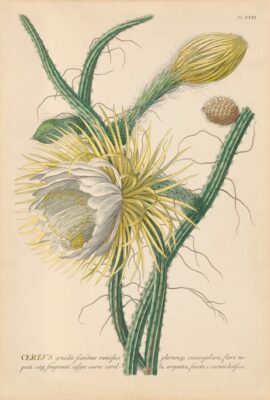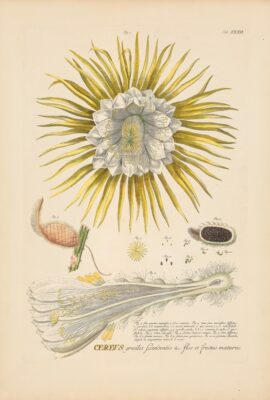Botanical Art
Trew and Ehret’s Magnificent Florilegium “Plantae Selectae”
A Union of Botanical Accuracy and Artistic Beauty
Plantae Selectae is an 18th-century florilegium containing 100 plates of plant species exotic to Europe at the time. The luscious compendium captures papayas, pineapples, bananas, and other New World species through the fresh eyes of artist Georg Dionysius Ehret who worked in collaboration with Dr. Christoph Jakob Trew. The resulting folio was an isolated phenomenon among 18th-century botanical illustrations in that it appealed to both artistic and scientific communities because of its astounding beauty and botanical accuracy, causing French naturalist Bernard de Jussieu to commend Trew by exclaiming; “The coloured drawings of plants which you have published surpass in beauty and exactitude everything that has appeared in this genre till now” (Bernard de Jussieu 1754).
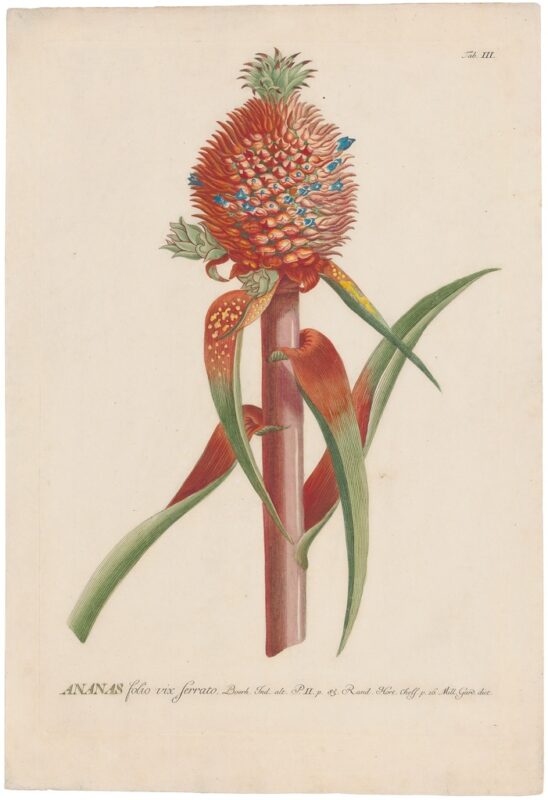
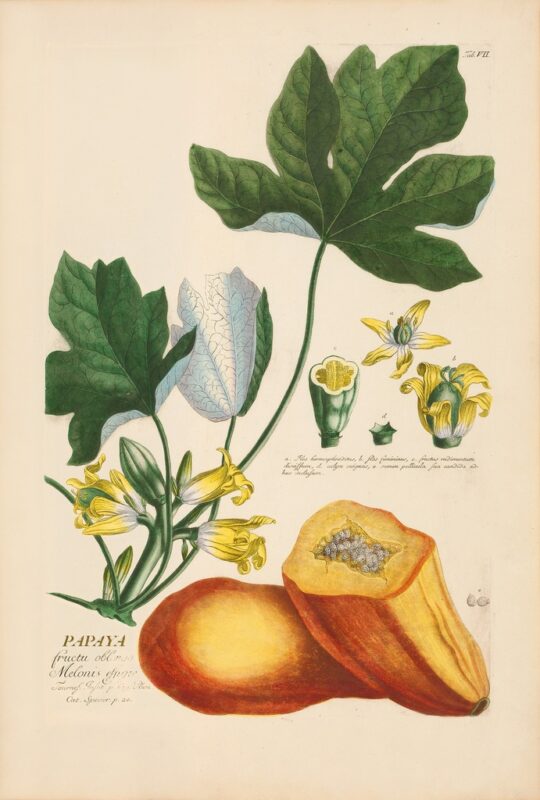
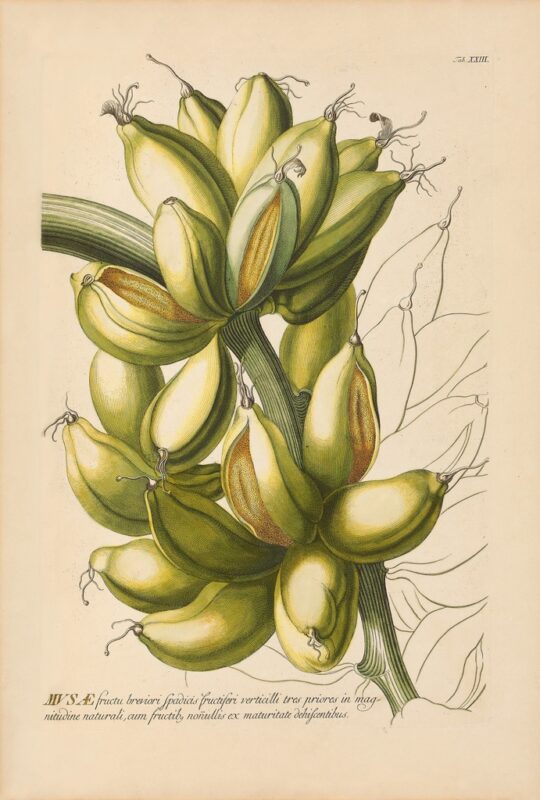
German-born Georg Dionysius Ehret, the artistic force behind the project, was initially trained as a gardener when, at the age of 22, he left home to pursue botanical draughtsmanship. During an apprenticeship in Regensburg, Ehret’s notable talent caught the attention of Dr. Trew who would become his lifelong friend, patron, and collaborator. As a physician, Trew’s botanical knowledge was considerable because the study of botany and medicine overlapped significantly at this time. As a result of their common interests in art and botany, the two men “maintained a strong friendship and numerous professional collaborations for 36 years before Plantae Selectae was published” (Calmann 1977, 95).
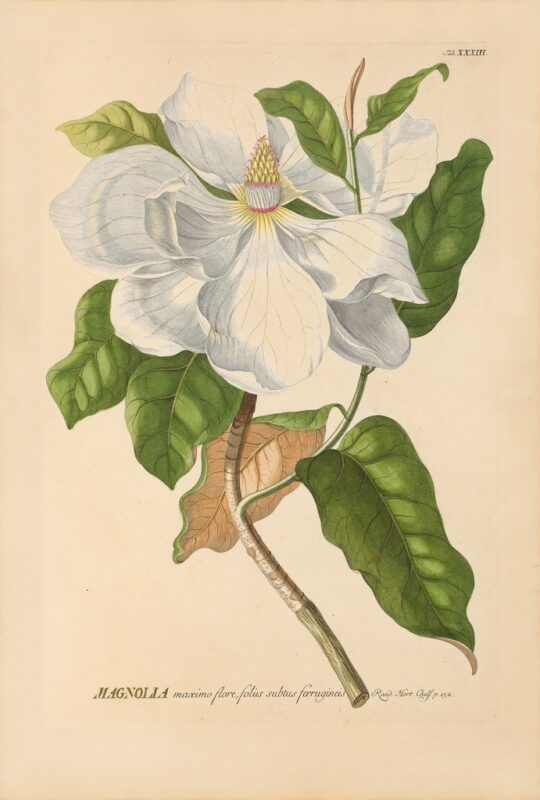
When describing the dynamic between Ehret and Trew, Gerta Calmann suggests that the two men “remained close to the end of their lives; the one with his inquiring mind, though rooted in one place, represented the learned authority, the other, restlessly on the move, followed his creative genius” (Calmann 1977, 24). While Trew remained in Nuremberg for the majority of his life, he encouraged Ehret to travel and experience the world firsthand. The process of producing Plantae Selectae was slow to mature and led Ehret to England where he explored London’s hothouses of exotic plants.
It was in these gardens that plants recently introduced to European soil and yet unknown to the general public were housed. Here Ehret painted numerous species and sent his illustrations to Trew, who wrote the accompanying text in Latin and curated the selection of plates that would be included in the final folio. Certain exotic specimens including the Magnolia, Cereus Cactus, and Banana were afforded more than one plate in the folio with special attention given to the various details of the species.
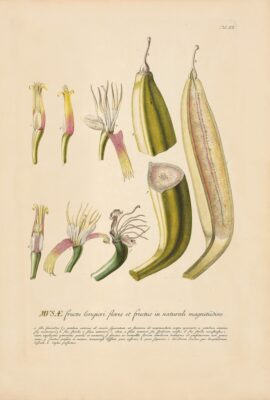
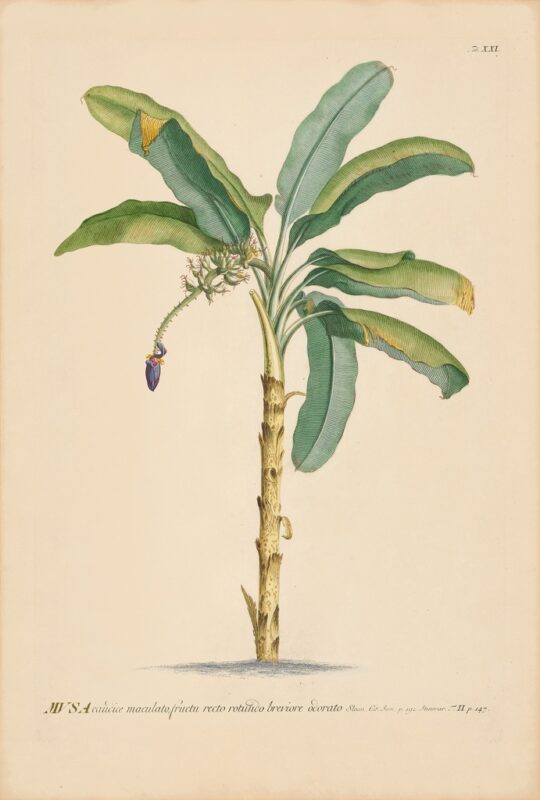
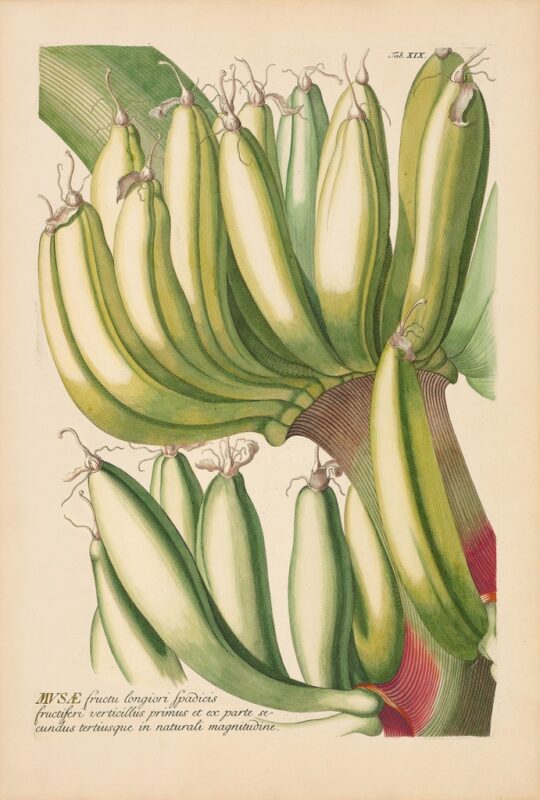
Take for example illustrations of the banana, to which an astonishing 6 plates are devoted in Plantae Selectae. Two plates capture the banana tree while another four delineate the details of the fruiting portion of the plant. While perhaps one of Western Europe’s most common and economical fruit varietals today, bananas were once a rarity in this region of the globe. In his art Ehret approaches the fruit with a sense of curiosity, admiring its intricate and varied qualities, leading Calmann to observe, “His coloured drawings have an immediacy and a spirituality which express his wonder and delight before nature” (Calmann 1977, 116).
Likewise, the Night Blooming Cereus, native to the deserts and subtropic regions of the Americas, is depicted in three distinct instances. The enigmatic plant, which resembles any other cactus the majority of the time, blooms at night once a year during midsummer when the temperature and humidity are at an equilibrium. The blossom is a wondrous white and yellow, emanating a delicious scent that earns the flower the moniker Queen of the Night. One can imagine the sleepless nights Ehret spent furtively observing the cereus before being rewarded with witnessing its blossoming.
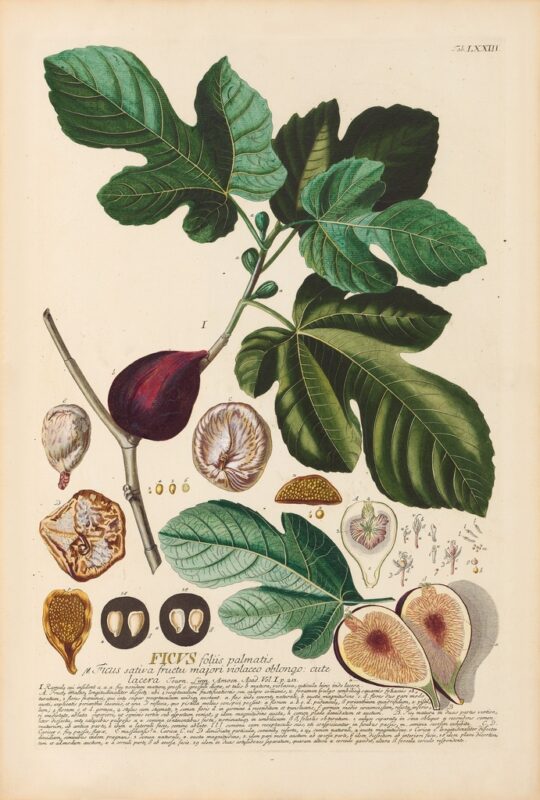
In the creation of Plantae Selectae, Ehret’s paintings were translated into printed form by engraver Johann Jacob Haid. The engravings were then enriched with hand-applied watercolor and gouache, with the select application of gold leaf to the titling of each plant species. The prints were then bound with Trew’s accompanying text and issued as a compendium of the rarest and most novel plants known to Europe at that time.
The two collaborators’ folio was well received and Ehret’s success as an artist caused him to gain notable patrons including Sir Hans Sloane, founder of the British Museum. Likewise, he and renowned botanist Carl Linnaeus enjoyed a lifelong friendship, with the latter adorning the walls of his bedroom with Ehret’s illustrations from Plantae Selectae (Calmann 1977, 51). Trew and Ehret worked on several projects together including Plantae Selectae (1750-73) and Hortus Nitidissimis (1750-86), both of which gained recognition as masterpieces among flower books and a testament to the close association of the two men. “With an art that combined botanical exactitude with great beauty, Ehret inaugurated The Golden Age of Botanical Art,” causing some to consider “Georg Dionysius Ehret to have been the finest botanical artist, not only of his age, but of all time…” (Calmann 1977, 51) (Coats 1973, 14).
Works Referenced:
Blunt, Wilfrid and Sitwell, Sacheverall, Great Flower Books 1700-1900 (Collins: London, 1956)
Coates, Alice M., The Book of Flowers (Phaidon Press: London, 1973)
Calmann, Gerta, Ehret: Flower Painter Extraordinary (Phaidon Press: London, New York Graphic Society: Boston, 1977)


